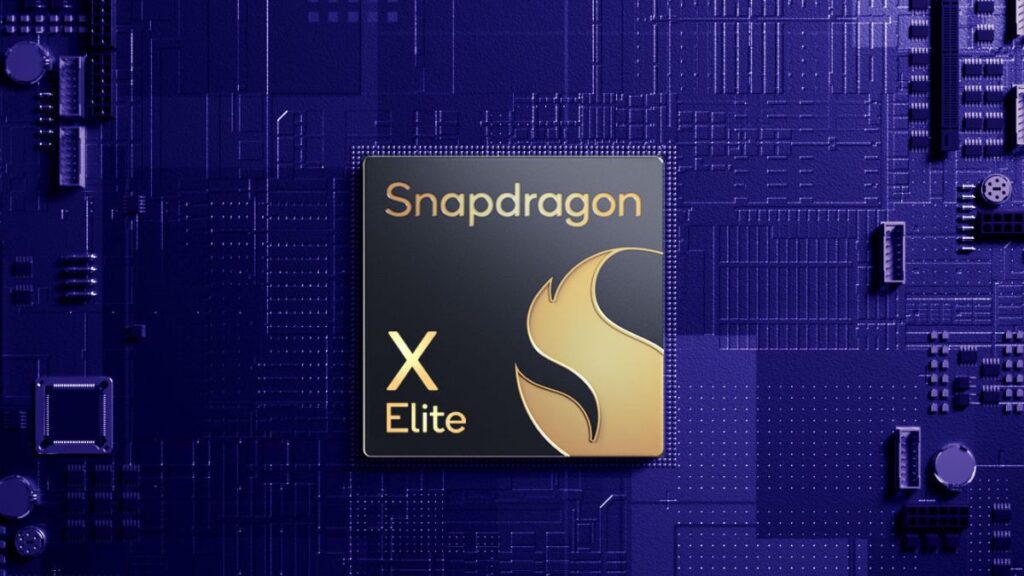Snapdragon has become the latest entrant in the PC processor space with its Snapdragon X series of chipsets. The company’s integrated SoC in PCs is now the necessary classifier to label a device Copilot+ PCs, another Microsoft terminology for AI PCs. However, this is just marketing nomenclature that has little to do with the overall performance of the chipset. A new report has now conducted benchmark tests for the Snapdragon X series of chipsets to find out how they stack up against chips from Apple, Intel and AMD.
The Snapdragon X series chips are said to be better than Apple’s M3 chipset
Extensive benchmark tests conducted by The Verge show that the Snapdragon X Elite chipsets are 2-3 percent faster in single-core performance than Apple’s M2 Max chips that powered the 2023 MacBook Pro model. These benchmark tests were conducted on Geekbench 6 and Cinebench 2024 as they run on all of the company’s processors, according to the publication.
The Snapdragon SoC also reportedly outperformed Intel’s Core Ultra 7 155H and AMD Ryzen 7 8845HS by 24 percent and 17 percent, respectively. However, compared to Apple M3 chipsets, the Cupertino-based tech giant is said to be leading the race in The Verge’s single-core benchmark tests.
The Snapdragon X series chipsets performed remarkably well in the multi-core CPU performance benchmark, the publication said. However, Apple’s M2 Max and M3 Max managed to outdo them, thanks to a higher number of cores (Apple’s M3 Max has 16 cores versus up to 12 cores on its Snapdragon X-series counterpart).
On the other hand, the 12-core Apple M2 Max chipset reportedly offered marginally faster performance compared to the top-tier Snapdragon X Elite chips in the Cinebench 2024 benchmark test.
The GPU performance of the Snapdragon X Elite series is said to lag behind rivals
GPU performance is an important consideration if users plan to run resource-intensive games or applications. According to the report, this is one area where the Snapdragon X series chipsets lag behind their counterparts from Apple, Intel and AMD.
In Geekbench 6 GPU (OpenCL) benchmark testing, the publication found that the highest score for Snapdragon X Elite chips with Qualcomm Adreno GPU was 24,004 points in the Samsung Galaxy Book 4 Edge.
On the other hand, the AMD Radeon 780M GPU in the Acer Swift Go 14 AMD scored 29,199, and the Intel Arc GPU in the MSI Prestige 16 Evo scored 34,528. Leading the way in this category was the Apple M3 Max in the late 2023 MacBook Pro 16 with a score of 91,480.
The Snapdragon X series could offer competitive battery life
Battery life is another important indicator of chipset performance. This is a test of the overall optimization of the SoC in the device. The publication found that Snapdragon laptops offer between 14 and 16 hours of battery life on average. However, none could reach the 18-hour mark offered by the M3 MacBook Air.
Interestingly, AMD and Intel fared even worse than Snapdragon in this area. The only exception was reportedly the Samsung Galaxy Book 4 Ultra with an Intel processor that was able to run slightly longer than 14 hours on a single battery charge.
Based on these metrics, it can be said that while the Snapdragon X series chipsets are not clear winners in benchmark tests, they still offer better CPU, GPU and battery life performance than previous Arm-based Windows laptops.
Namely, Snapdragon laptops in the US are relatively cheaper than Apple, Intel and AMD, but we don’t know how much these laptops will cost in India.
In a recent conversation with Gadgets 360, Don McGuire, director of marketing at Qualcomm, said, “We’ve worked closely with Microsoft for the past three to four years to build the Snapdragon X series of chipsets. The new chipsets deliver high performance on the CPU, GPU and NPU. These (Snapdragon chipset powered) AI PCs will be able to offer better video conferencing capabilities, overall performance, battery life and AI performance.”

